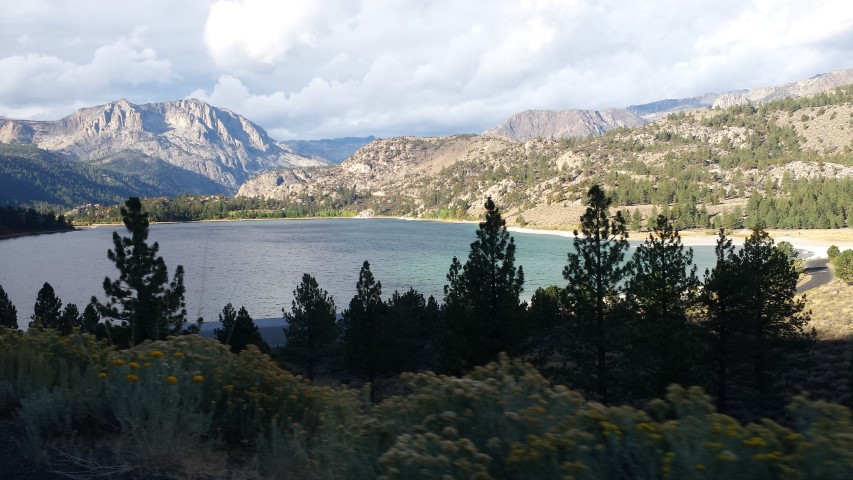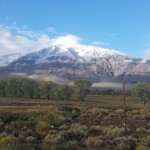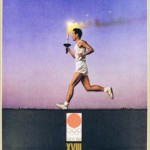by Bob Sparrow
 We had an early wake-up at 5:00 a.m. At breakfast we could see other groups in camp heading down to the trail and turning left toward Machu Picchu, when we got to the trail, Humberto turned right. We looked at each other quizzically, as we knew he knew that Machu Picchu was the other way, but we also knew that Humberto wasn’t lost, so we followed. After a fairly short hike, we came to a clearing and to a placed called Winaywayna. I’ll come back to explain more.
We had an early wake-up at 5:00 a.m. At breakfast we could see other groups in camp heading down to the trail and turning left toward Machu Picchu, when we got to the trail, Humberto turned right. We looked at each other quizzically, as we knew he knew that Machu Picchu was the other way, but we also knew that Humberto wasn’t lost, so we followed. After a fairly short hike, we came to a clearing and to a placed called Winaywayna. I’ll come back to explain more.
We turned around and headed for Machu Picchu, but just prior to getting there Humberto tells us to go ahead of him, that he wants us to experience this on our own. So we round the next bend in the trail and are confronted with what is known as ‘The Gringo Killer’. It is the trail, or more aptly a ladder, of granite stones going straight up that requires hand-over-hand climbing to scale them. About half way up we look back to see Humberto standing there with a big grin on his face.
Shortly after ‘The Gringo Killer’ we come to the Sun Gate, which is the unofficial entrance to Machu Picchu from the Inca Trail; we renamed it ‘Rain Gate’ since it had started to rain again. The Sun Gate is on a ridge above Machu Picchu and was built by the Incas in such a way that the sun would shine through a hole in the stone and onto Machu Picchu on December 21, their summer solstice that marks the half way point of their year.
From the Sun Gate, for the first time, we see the vast expanse of Machu Picchu, the mountains that surround it and the incredible stonework that the Incas crafted. The many pictures of it that I’ve seen since booking this trip, and the many descriptions I’ve read, all pale in comparison to standing there and taking it all in. It is such an incredible work of architecture and art that it just boggles the mind to think about how it was all put together. I try to envision how it was back then, the movement and placement of the stones, the terracing of the steep mountain slopes for crop-growing, the creation of intricate irrigation systems for drinking, bathing and nurturing the crops. I try to envision the approximate 400 inhabitants going about their daily lives in this Andean paradise.
But it’s hard, when I look down and see hundreds of tourists milling around through the complex. Unfortunately we arrived on a Saturday and the place was shoulder-to-shoulder with people from all over the world, who had come early by train to see a sun rise over the Sun Gate on this rainy day. That’s not to say that it ruined our experience, it didn’t, it just colored it a little differently than we would have liked.
Back to Winaywayna – when we left camp and turned right, Humberto wanted us to experience something very special. As we came around the corner to Winaywayna (it means ‘forever young’), we all just stood there in awe and said, “Wow”. It is a complex similar to Machu Picchu, only much smaller – stone wall terraces, stone buildings, and irrigation systems that were still working, while several llama were grazing on the terraces. And on this beautiful mist-covered morning, we were the only ones there. The only ones there! We would appreciate that much more when when got to Machu Picchu. We walked out on several terraces, examined the water features for irrigation and bathing and looked at the living quarters, all made of stone that will be there for centuries to come. The four of us talked about it later and concluded that being at Winaywayna that morning was on all of our ‘top 2-3 highlights’ of the trip. I can’t speak for the others, but for me it was somehow an incredibly spiritual experience.
We spent about three hours touring through Machu Picchu as Humberto gave us vivid and detailed accounts of Incan life here during the 15th century. I mentioned earlier that your guide can make or break your trip – we were extremely lucky to have someone with the knowledge and wisdom of Humberto – he made our trip!
From Machu Picchu we take a train into the Sacred Valley where we meet our van that takes us to the Sol & Luna Hotel, where we have our first shower in four days – you can imagine that our van didn’t exactly smell like a bouquet of roses! We had dinner at the hotel and, exhausted from four exhilarating days in the Andes, we were all anxious to get into a real bed.
The next day we went into Cusco for our last day in Peru. As our van came through the hills over-looking Cusco, we were reminded of the ever-present poverty that exists in this country. Ironically the homes on the hillside that have spectacular views of the city and the Andes, are the most impoverished, as the higher up on the hill a home is, the colder and windier it gets, and thus less desirable.
We knew we were ready to come home when we spent our last afternoon in Cusco in Paddy’s Irish Pub, having a beer and a cheeseburger while watching the 49ers beat the Ravens.
Pub, having a beer and a cheeseburger while watching the 49ers beat the Ravens.
It was an incredible adventure; one I’m glad I didn’t wait too much longer to do. Thank you to Patrick, Steven and Graydon for sharing this awesome, life-time experience and thanks to those of you who followed along vicariously; as you know, you’re the reason I do this crazy stuff.
























